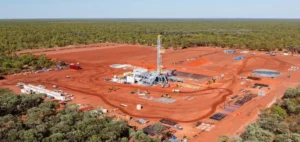The Vietnamese government has officially granted Hai Linh Co.
Ltd. the license to import and export LNG, making it the country’s first private firm to enter this strategic market.
The decision comes after the Ministry of Industry and Trade issued the first such license to PetroVietnam Gas, the country’s state-owned oil and gas company.
Development of the Cai Mep LNG Terminal
In May 2023, Hai Linh announced that the Cai Mep LNG terminal, located in the southern province of Ba Ria-Vung Tau, would begin operations in September 2024.
The project, developed in collaboration with Atlantic, Gulf and Pacific LNG (AG&P LNG), a subsidiary of Singapore-based Nebula LNG, aims to provide integrated LNG supply solutions.
Vietfirst Gas, Hai Linh’s joint venture, has secured a 1 million tonnes per annum LNG purchase agreement with the HPP power plant and another with a Vietnamese demand aggregator.
This infrastructure is crucial to meeting the country’s growing energy demand and diversifying its energy supply sources.
No tendering process
Despite market expectations, Hai Linh has not yet launched a tender process for the import of LNG cargoes.
In May, the company expressed interest in a commissioning LNG cargo, but no formal offer has been issued to date, according to market sources. Southeast Asian market prices for LNG remain volatile.
On August 2, Platts assessed the September JKM price at $12.915/MMBtu, with a 27.7 cents/MMBtu discount for cargoes delivered in Southeast Asia compared with the September JKM.
Outlook and market impact
Hai Linh’s entry into Vietnam’s LNG market is a sign of the gradual liberalization of the country’s energy sector, traditionally dominated by state-owned enterprises.
This move could encourage other private companies to explore similar opportunities, thereby increasing the competitiveness and efficiency of the local energy market.
The involvement of international partners like AG&P LNG also underlines the importance of global collaboration in addressing energy challenges.
With rising energy demand in Vietnam, the Hai Linh initiative could play a decisive role in the stability and diversification of the country’s energy sources.
The development of the Cai Mep terminal and Hai Linh’s future operations are being closely monitored by market players at both national and international level.
The decisions and strategies adopted by Hai Linh over the coming months could well redefine Vietnam’s energy landscape, offering new prospects for growth and innovation.
The evolution of the LNG market in Vietnam, with private players like Hai Linh entering the race, could also attract more foreign investment, boosting the local economy.
This dynamic could encourage an increase in LNG production and storage capacity, strengthening Vietnam’s position in the global energy market.






















